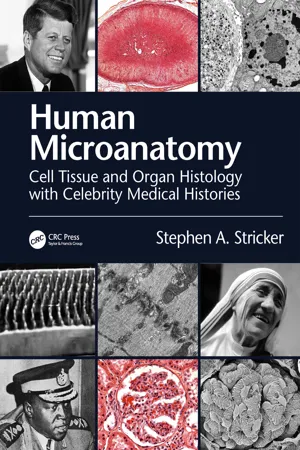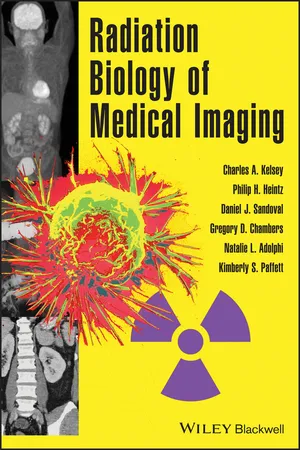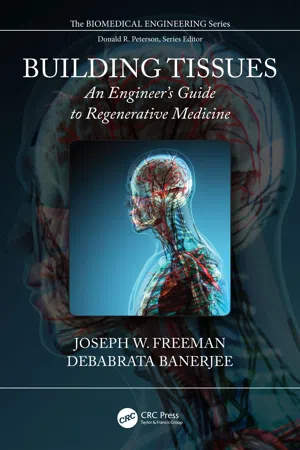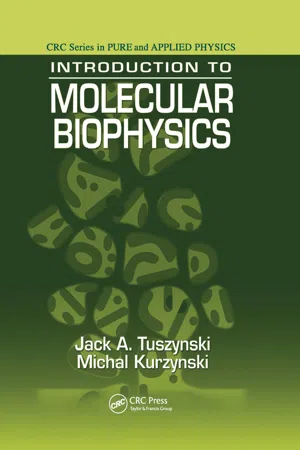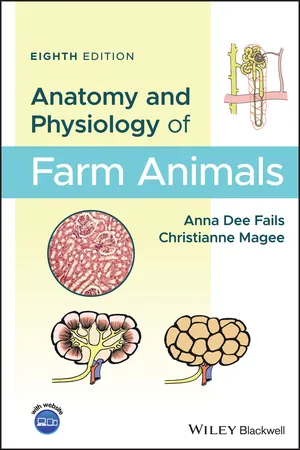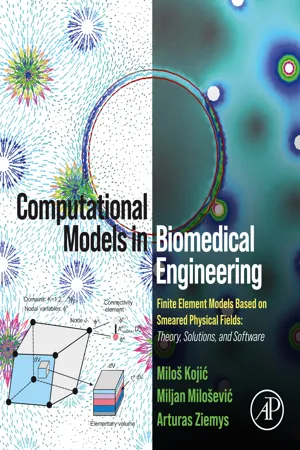Biological Sciences
Tissues and Organs
Tissues are groups of cells that work together to perform a specific function in the body, such as muscle tissue or nerve tissue. Organs are made up of different types of tissues and have specific functions within the body, such as the heart or the liver. Together, tissues and organs form the complex structure of living organisms, allowing them to carry out essential processes for survival.
Written by Perlego with AI-assistance
9 Key excerpts on "Tissues and Organs"
- eBook - ePub
Human Microanatomy
Cell Tissue and Organ Histology with Celebrity Medical Histories
- Stephen A. Stricker(Author)
- 2022(Publication Date)
- CRC Press(Publisher)
Tissues, in turn, join together to create organs (Figure 1.1a), each of which comprises a discrete collection of interacting tissues with differing functional properties and developmental origins (Chapter 3). The structure and function of cells, tissues, and organs are the focus of histology (= Greek: “histo” [woven, web, tissue] + “logos” [study of]). Alternatively, because histological studies often rely on microscopes to analyze anatomical components, histology is also known as microscopic anatomy or microanatomy. Figure 1.1 Introduction to microanatomy and its size scales. (a) Microanatomy (=histology) analyzes the functional morphology of (i) cells, (ii) tissues (=integrated assemblages of cells plus their extracellular matrix [ECM]), and (iii) organs (=discrete collections of interacting tissues). (b) Some biological structures with conserved size ranges include (i) cells (typically 10–50 µm in diameter), (ii) mitochondria (∼0.5–1 µm wide), (iii) ribosomes (∼25 nm in diameter), and (iv) cell membranes (=plasma membranes) (7 nm thick). This book covers the fundamentals of human microanatomy from a biologically oriented point of view that incorporates developmental and evolutionary perspectives into its descriptions of functional morphology. Although medically relevant information is routinely presented, detailed depictions of pathological microanatomy are seldom included. Instead, this text aims to provide a concise account of the normal structure and function of cells, tissues, and organs. Accordingly, overviews of cell and tissue biology presented in Chapters 2 and 3 focus on essential background information needed for subsequent chapters covering specific cells and tissues in normally functioning organs. To help provide orientation for descriptions of organ-level microanatomy, many of the included micrographs have stitched together overlapping regions to generate wide-field panoramic views of whole organs or large portions of organs - eBook - ePub
- Charles A. Kelsey, Philip H. Heintz, Gregory D. Chambers, Daniel J. Sandoval, Natalie L. Adolphi, Kimberly S. Paffett(Authors)
- 2013(Publication Date)
- Wiley-Blackwell(Publisher)
CHAPTER 1 Anatomy and PhysiologyKeywordsCell components, homeostasis, tissue growth, tissue repair, organs, organ systemsTopics- Four main components of a cell
- Four tissue groups
- The difference between tissue growth and tissue repair
- Organs and organ systems
- The role of homeostasis
Introduction
The human body is a complex arrangement of chemicals and chemical reactions. Atoms are combined into specific arrangements creating the chemicals that are used in precise reactions. In addition to orderly reactions, the chemicals combine to form the complex substances that make living cells. Chemicals are nonliving components that allow cells, the basic units of all life, to perform all aspects of life. These characteristics include organization, growth, and reproduction. As can be seen in Fig. 1.1 , the organization and structure of the body begins with chemicals and progresses through greater levels of organization, beginning simply with cells and ending with the entire human body.Figure 1.1Organization of the body, beginning with chemicals combining into simple atoms and progressing through cells, tissues, organs, and, finally, the whole body. From Tortora and Nielsen (2012), figure 1.1, p. 5.The cell is the simplest structure of the human body. As the levels of organization expand, so does the complexity of the system. Groups of cells with the same, or similar, functions gather to form tissues. For instance, the primary function of pancreatic cells is to produce insulin whereas cells of the kidney aid in the filtration of blood. When a group of similar tissues function together, they become known as an organ. Most organs have several roles and belong to multiple organ systems. An organ system consists of multiple organs that function together and benefit the body as a whole. For example, the respiratory system, which consists primarily of the lungs, allows carbon dioxide to be exchanged for oxygen in the blood. The blood then delivers oxygen to cells throughout the body. - eBook - ePub
Building Tissues
An Engineer's Guide to Regenerative Medicine
- Joseph W. Freeman, Debabrata Banerjee(Authors)
- 2018(Publication Date)
- CRC Press(Publisher)
CHAPTER 4Tissue Structure and Function 4.1 INTRODUCTIONBefore we can regenerate or “engineer” a tissue, we must first investigate the tissue. What are its functions, what is it made up of? What is its underlying architecture? In this section we will discuss the tissues of the body and how the structure of these tissues leads to their function in the body. As in most of the sections in this book, we will provide an overview of some important points with regard to each tissue. For more in-depth information we encourage you to seek other texts including the ones that we used for our background research. These texts include Physiology, edited by Berne, Levy, Koeppen, and Stanton; Vander’s Human Physiology: The Mechanisms of Body Function, edited by Widmaier, Raff, and Strang; Basic Orthopaedic Biomechanics, edited by Mow and Hayes; Human Physiology, edited by Roades and Pflanzer; and Tissue Mechanics by Cowin and Doty.1 ,2 ,3 ,4 ,5We will start with the most basic question: What is a tissue? A tissue is a group of cells with similar function and appearance. Specifically, a biological tissue is a collection of interconnected cells that perform a similar function within an organism. In our bodies, different organs have different functions, so they need different tissues to work together to carry out these functions. Although some tissues differ in their compositions, we find that many tissues are composed of the same large molecules. The differences lie in the amounts of these molecules and their arrangement in each tissue. Biological tissues vary in their thickness and complexity. The simplest tissues are found as membranes or sheets. These tissues combine to form organs, groups of organs form a system, and multiple systems make up the human body.4.2 TYPES OF TISSUESThere are four basic types of tissues in the body, and each has a different function and different properties depending on the function. The four major types of tissues are connective, epithelial, muscular, and nervous. These tissues compose all of the organs and structures in the body. - eBook - ePub
- Sue Dallas, Emily Jewell(Authors)
- 2014(Publication Date)
- Wiley-Blackwell(Publisher)
Section 1 Animal BiologyPassage contains an image
Chapter 1 Cells and Basic Tissues
In this chapter, the learning outcomes are:Summary- To understand the essential functions required to sustain life – MRS GREN
- To be able to identify the structure and function of animal cells and tissues
- To be able to recognize the diversity of animal cells and tissues in existence
What is biology?Biology is the study of life and living organisms
In order to be considered as a living organism, an organism must be able to perform all the following essential functions of life:What is life?- Movement – the organism is capable of moving itself or a part of itself.
- Reproduction – the organism is capable of reproducing itself so that the species doesn’t die out.
- Sensitivity – to stimuli in its surroundings in order to avoid life-threatening occurrences in the environment.
- Growth – sustained growth from within by a process which involves the intake of new materials from the outside and their incorporation into the internal structure of the organism.
- Release of energy from respiration – in a controlled manner and in a form usable by the organism. The process of respiration releases energy from food to sustain life.
- Excretion – the removal of the waste products of metabolism from the organism.
- Nutrition – taking in food materials which provide energy to maintain life and growth.
The cell is the simplest functional unit of all tissues and has the ability to perform individually all the essential life functions. Organisms may be single-celled or multi-celled. Within the multicellular organisms, the constituent cells show a wide range of specialisations. Cells can be viewed as the building blocks of the body, and so the following can be said:- Cells form…
- Tissues, and tissues form…
- Organs, and organs… join together to form systems within the body.
- Systems have a specific function to perform in the living organism.
The diversity of cellsCells are not all identical (Fig. 1.1 - eBook - ePub
- Jack A. Tuszynski, Michal Kurzynski(Authors)
- 2003(Publication Date)
- CRC Press(Publisher)
8Tissue and Organ Biophysics
8.1 Introduction
Multicellular organisms are arranged hierarchically into tissues, organs, and organ systems. Tissues are composed of colonies of cells and extracellular matrices. Some cells, e.g., white blood cells can migrate among tissues. Several different tissues may function jointly to form an organ, with one type of tissue designated to play the role of its skin. Organs may function cooperatively to form a system, e.g., the circulatory system, the nervous system, the immune system, the respiratory system, etc. (Cerdonio and Noble, 1986).Animal tissues are classified as epithelial, connective, muscle, and nerve. Epithelial cells control the selective process of material transport. Connective tissue is composed of nerve cells, endothelial cells, and macrophages that remove debris. They also contain fibroblastic cells that are responsible for secreting extracellular matrix. Finally, connective tissue is criss-crossed by a network of collagen fibers of varying density. Osteoblasts are related to fibroblasts and inhabit the bones. Cartilage is produced by chondrocytes. Apidocytes are fat cells, distinguished by their round shapes and large sizes. Smooth muscle cells are filled with actin and myosin bundles. Muscle cells have four structurally distinct forms: skeletal, cardiac, smooth, and myoepithelial. Skeletal and cardiac muscle cells are jointly referred to as striated muscle cells due to their appearance. Smooth muscle cells are mainly present in blood vessel walls and intestines.This chapter presents a panoramic view of the key organs and systems in human and animal bodies. Our focus is on physical phenomena and mechanisms behind the functioning of the systems, organs, and tissues. The level of sophistication employed in this chapter rarely exceeds introductory physics (Tuszynski and Dixon, 2002). Nonetheless, the combination of biological, physiological, chemical, and physical knowledge required makes this overview at times demanding. We begin by investigating the role of pressure that must be maintained by various organs in the human body for them to function properly. - eBook - ePub
- James Bobick, Naomi E. Balaban(Authors)
- 2019(Publication Date)
- Visible Ink Press(Publisher)
milieu intérieur (internal environment). He referred to the body’s ability to maintain a relative constancy in its internal environment.What are the four levels of structural organization in animals?Every animal has four levels of hierarchical organization: cell, tissue, organ, and organ system. Each level in the hierarchy is of increasing complexity, and all organ systems work together to form an organism. (For more information about the cell, see the chapter entitled “Biology.”)TISSUE What are the four major types of tissue?A tissue (from the Latin word texere , meaning “to weave”) is a group of similar cells that perform a specific function. The four major types of tissue are epithelial, connective, muscle, and nerve. Each type of tissue performs different functions, is located in a different part of the body, and has certain distinguishing features. The table below explains these differences.Characteristics of Tissues
What are some examples of epithelial tissue?Tissue Function Location Distinguishing Features Epithelial Protection, secretion, absorption, excretion Covers body surfaces, covers and lines internal organs, compose glands Lacks blood vessels Connective Bind, support, protect, fill spaces, store fat, produce blood cells Widely distributed throughout the body Matrix between cells, good blood supply Muscle Movement Attached to bones, in the walls of hollow internal organs, heart Contractile Nerve Transmit impulses for coordination, regulation, integration, and sensory reception Brain, spinal cord nerves Cells connect to each other and other body parts Epithelial tissue, also called epithelium (from the Greek words epi , meaning “on,” and thele - eBook - ePub
- Anna Dee Fails, Christianne Magee(Authors)
- 2018(Publication Date)
- Wiley-Blackwell(Publisher)
The most important organelle, and the defining feature of eukaryotic cells, is the membrane bound nucleus that contains the genetic material for the organism (Fig. 1‐2). Detailed information about the remaining organelles and the structure of the individual cell is described in Chapter 2. Tissues are discussed in this chapter. Figure 1‐2. A cell as seen with an electron microscope. The lightly colored areas in the nucleus (euchromatin) indicate that this hepatic (liver) cell is actively undergoing transcription. a, rough endoplasmic reticulum; b, microvilli; c, mitochondrion; d, nuclear envelope; e, nucleolus; f, plasma membrane. Source : image courtesy of D.N. Rao Veeramachaneni, BVSc, MScVet, PhD, Professor of Biomedical Sciences, Colorado State University. In complex animals, cells specialize in various functions to support the animal and the hierarchy of the organization of these cells is important when describing the anatomy of an animal. A group of specialized cells is a tissue. For example, cells that specialize in conducting impulses comprise nervous tissue whereas cells that specialize in holding structures together make up connective tissue. Various tissues are associated in functional groups called organs. The stomach is an organ that functions in digestion of food. A group of organs that participate in a common enterprise make up a system - eBook - ePub
- Karen Coumbe(Author)
- 2012(Publication Date)
- Wiley-Blackwell(Publisher)
2 Anatomy and PhysiologyP.D. Clegg1 , N. Townsend1 & R.C. Conwell21 University of Liverpool Veterinary School, Liverpool, Cheshire and2 Equimed Referrals Ltd, Tadcaster, North YorkshireCell Structure
The cell is the basic unit of life. The nucleus is normally located in the centre of the cell. It is surrounded by the nuclear membrane. The nucleus consists of deoxyribonucleic acid (DNA), which contains the genetic Code. The nucleus is surrounded by cytoplasm. The cytoplasm contains organelles with specific roles, such as ribosomes for protein synthesis and mitochondria for energy production. The whole cell is enclosed by a cell membrane that controls what substances enter or leave the cell.Basic Tissue Types
A tissue is a collection of cells of one type with a common function, e.g. cardiac muscle. A structure in which one type of tissue predominates and has a specific function is an organ, e.g. the heart. A collection of Tissues and Organs that share some common function is a system, e.g. the cardiovascular system.The following is a list of types of tissue.- Epithelial tissue, which covers the outside of the body and also lines airways, the digestive tract and the genito-urinary tract. Its role is protection and secretion. Glandular epithelial tissue is a specialised epithelium that secretes substances. The secretory epithelial cells are often grouped together with a duct connecting to the outside surface (glands). Sometimes glands do not communicate with the external epithelium (ductless or endocrine glands); these glands secrete hormones
- eBook - ePub
Computational Models in Biomedical Engineering
Finite Element Models Based on Smeared Physical Fields: Theory, Solutions, and Software
- Milos Kojic, Miljan Milosevic, Arturas Ziemys(Authors)
- 2022(Publication Date)
- Academic Press(Publisher)
Different types of cells may compose tissue giving the tissue-specific biological features that are needed for the functioning of the body organs. As described in the previous section, cells within the tissue are embedded into the extracellular matrix, which is a complex medium made of many different salts, organic molecules, water, enzymes, polysaccharides, and other biomolecules. Extracellular matrix composition, chemistry, and mechanics can be specific to organ tissue and cells within it. Many organs in the human body are organized into systems, such as digestive, nervous, respiratory, reproductive, skeleton-muscular, circulatory, and others. Each system can be composed of numerous organs. For example, the digestive system includes the mouth, esophagus, stomach, small intestines, large intestines, liver, pancreas, etc. The biological tissues composing these organs can be even more diverse. This diversity, or heterogeneity, leads to the high complexity of the biological environment. But it is common that in order to function, all organs need oxygen and nutrients, as well as waste removal. Here, the circulatory systems interweave with the tissues of organs and serve as the main mass transport highway.Heart, lung, liver, brain, kidney, guts, pancreas, muscle, blood, and skin are frequently analyzed entities according to their biomedical importance. We here review a few of them briefly, presenting their anatomical locations, structure, biology, and some tissue specificities pertinent to the computational modeling of transport in the subsequent chapters.Heart. The heart is the most critical organ in the cardiovascular system, which pumps blood through all cardiovascular and lymphatic systems. The heart is a muscular organ that is located in the center of the chest behind the sternum. It is made of four compartments: two atria—the upper blood chambers that are receiving the blood, and two ventricles—the lower chambers that discharge blood (Fig. 1.5.1
Index pages curate the most relevant extracts from our library of academic textbooks. They’ve been created using an in-house natural language model (NLM), each adding context and meaning to key research topics.
Explore more topic indexes
Explore more topic indexes
1 of 6
Explore more topic indexes
1 of 4
